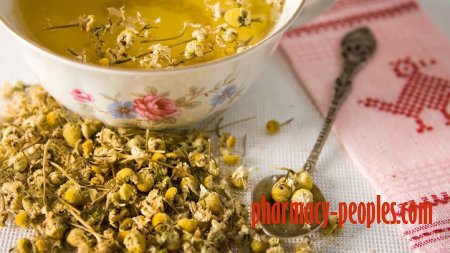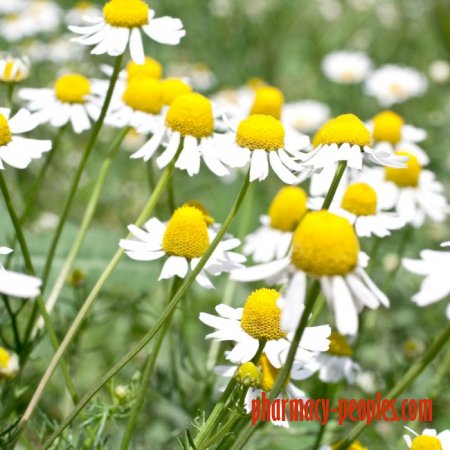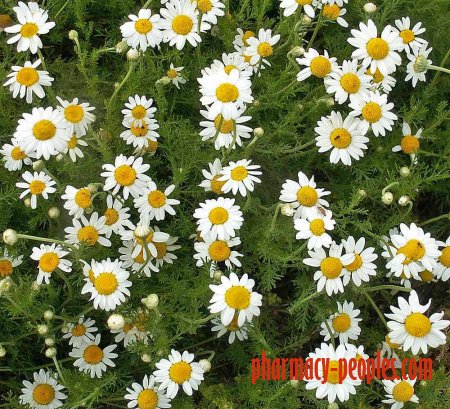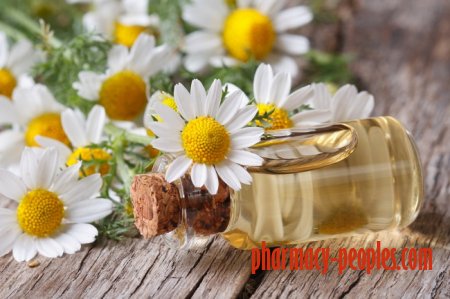What Is Chamomile Used for? Potential Benefits, Side Effects, Types, and More
Few rituals are as calming as settling in for the evening with a steaming cup of fragrant chamomile tea just before bed. Still, how much do you really know about the herb steeping in your teapot?
What Is Chamomile Exactly, and Where Does the Spice Come From?
Two different, related plants that bear the name of chamomile are used for medicinal tea purposes: Matricaria recutita, also known as German chamomile; and Chamaemelum nobile, also known as Roman chamomile. Both belong to the Asteraceae family of flowering plants that include daisies and sunflowers. The most common variety in use is German chamomile, which is what people are usually talking about when they refer to chamomile. It is native to Europe and western Asia, but it’s now grown across the globe.
Given the sun-like appearance of chamomile blossoms, which are typically yellow in the middle with ray-like white blossoms radiating outward, it should come as no surprise that the ancient Egyptians used it in offerings to the sun god Ra and burned it as incense. During the Middle Ages, Europeans used it as an air freshener and a cure-all for health ailments. Chamomile’s restorative reputation persists to this day.
Chamomile Nutrition Facts: What’s in the Plant?
According to the U.S. Department of Agriculture, chamomile is very low in calories, at only 2 calories per cup. It is not a significant source of any other nutrients.
What Is the Difference Between German and Roman Chamomile?
As mentioned, German chamomile and Roman chamomile are different species of flowering Asteraceae plants, though they have similar reputations for medicinal powers. Both are daisy-like in appearance and sweetly redolent of apples and grass, but there are subtle differences in appearance and their growing cycles vary.
German chamomile, which is the more widely used of the two, is an annual herb also known as Hungarian chamomile or wild chamomile. Also the taller type of chamomile, the German variety reaches up to 2 feet tall with a smooth stem. It has sparse, fernlike green leaves and silver-white petals blooming from a hollow receptacle. Its essential oil is dark blue, and it’s thought to have anti-inflammatory, anti-spasmodic, and anti-microbial properties, in part due to the chemical compounds bisabolol and azulene.
Roman chamomile, also known as English chamomile, is a perennial that grows to be about 1 foot tall. Its gray-green leaves are thicker than those of its German cousin, and its white petals emanate from a solid receptacle. The essential oil is pale yellow to clear. It contains esters of angelic and tiglic acids, responsible for its reputed sedative properties and a warm, spicy odor, respectively. Some people believe its tea can help reduce inflammation and soothe gastrointestinal problems. Chamomile users prize the herb variety for its possible medicinal qualities, scent, and taste.
Try each for yourself in a tea or in aromatherapy and see which one comes out on top for you.
What Are the Possible Health Benefits of Chamomile?
If you’ve struggled with sleepless nights or a bout of insomnia, there’s a good chance you’ve reached for a cup of chamomile tea to help you snooze more soundly. Some people also turn to chamomile in supplement or tea form to help relieve anxiety and gastrointestinal conditions, such as upset stomach, gas, and diarrhea. It’s also applied to the skin in oils, ointments, or creams for skin conditions; and is used as an oral rinse for mouth sores. For the most part, these effects have not been studied enough in humans to prove their effects, though, according to the National Center for Complementary and Integrative Health (NCCIH).
But the NCCIH notes that preliminary research suggests chamomile may be helpful for generalized anxiety disorder when taken as a dietary supplement. A small, randomized, double-blind, placebo-controlled study published in August 2009 in the Journal of Clinical Psychopharmacology concluded that participants taking German chamomile extract saw a reduction of anxiety compared with control participants. The researchers called for further study to reproduce the results.
The results of a small, randomized, clinical trial published in 2016 in the journal Phytomedicine: International Journal of Phytotherapy and Phytopharmacology concluded that the use of German chamomile extract over 26 weeks helped significantly lower symptoms of generalized anxiety disorder and keep the condition at bay.
The NCCIH also takes note of research that products containing certain combinations of herbs that include German chamomile may help to address upset stomach in adults, diarrhea in children, and colic in infants, but says that “chamomile alone has not been shown to be helpful for these conditions.”
Is Chamomile Good for Weight Loss? What the Research Suggests
If you want to lose weight, you’re better off burning more calories than you take in instead of turning to chamomile for a quick fix. That’s because research on this benefit of the herb is extremely limited. Nevertheless, chamomile’s calming effects could potentially aid in weight loss or maintenance, considering research has shown a link between getting a good night’s sleep and staying slim. A study of data from the 2007–2008 National Health and Nutrition Examination Survey (NHANES), published in December 2015 in the journal Obesity, found that adults ages 18 to 49 who slept longer had a lower body mass index (BMI) than those who slept less. The worst that could happen is that a nightly cup of chamomile could make dieting less stressful for you; but maybe it could help you sleep better and give you the upper hand in the battle of the bulge.
Are There Any Side Effects or Health Risks for Chamomile?
If you’re prone to floral allergies — especially with ragweed, chrysanthemums, marigolds, or daisies — you may be more likely to have a chamomile allergy, too. You would treat it the way that you would any floral allergies. Rarely, people have had a severe enough allergic reaction to go into anaphylaxis, a potentially life-threatening condition that can involve shock, hives, trouble breathing, vomiting, and unconsciousness. Anaphylaxis requires immediate medical attention and possible administration of emergency allergy medicine.
Chamomile can also trigger allergic contact dermatitis (a type of eczema) in some people, which can cause skin redness, itching, and swelling.
Also, adverse interactions between chamomile and Restasis (cyclosporine), a medication used to prevent organ transplant rejection, and the blood thinner Coumadin or Jantoven (warfarin) have been reported, according to the NCCIH. If you take either of these drugs, speak with your doctor before adding chamomile to your routine, especially in supplement form.
The National Institutes of Health’s MedlinePlus database deems Roman chamomile as “likely unsafe” to ingest in “medicinal amounts during pregnancy” because of the long-standing belief that it can induce miscarriage and a lack of information about its safety for pregnant women. German chamomile also may be risky, as research hasn't proven it's safe to use during pregnancy. If you're pregnant, be sure to speak with your doctor before adding any herbs to your diet.
How to Grow Chamomile — and Then Store the Herb
If you decide to grow your own chamomile, follow these steps:
- Pick the flowers when the petals are full, and lay flat around the center of the flower.
- Pop the flower head off with your fingers, and leave behind any stems.
- Spread the flowers out on a surface in a warm and well-ventilated place away from sunlight to dry out completely (or put them in a food dehydrator on the lowest heat setting for 12 to 24 hours).
- Store them in a sealed, airtight container for up to a year.
How Is Chamomile Cooked or Prepared?
Steep 1 to 1 1/2 teaspoons of dried chamomile flowers per 8 ounces (oz) of hot water. Hold it to your nose, breathe in the aroma, and enjoy tea time!
What Are Some Other Uses of Chamomile?
Chamomile essential oils are used in aromatherapy to improve mood and relieve stress. The essential oils can be blended into massage oils, lotions, or creams and applied to the skin. They can also be inhaled through steam or vapor therapy. As long as you aren’t allergic to chamomile and aren't taking other medication, you should be safe to indulge with your doctor’s okay.




